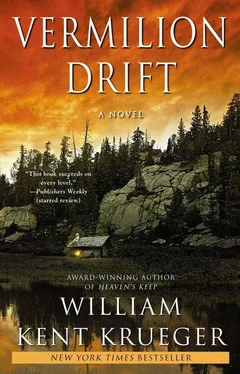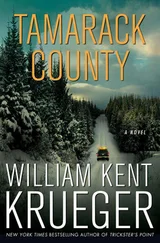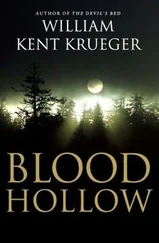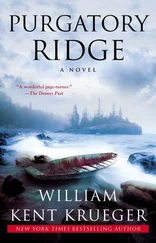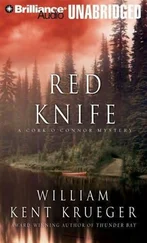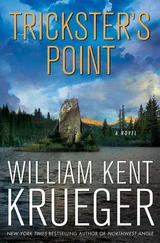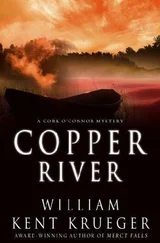William Krueger - Vermilion Drift
Здесь есть возможность читать онлайн «William Krueger - Vermilion Drift» весь текст электронной книги совершенно бесплатно (целиком полную версию без сокращений). В некоторых случаях можно слушать аудио, скачать через торрент в формате fb2 и присутствует краткое содержание. Год выпуска: 2010, Издательство: Atria Books, Жанр: Криминальный детектив, на английском языке. Описание произведения, (предисловие) а так же отзывы посетителей доступны на портале библиотеки ЛибКат.
- Название:Vermilion Drift
- Автор:
- Издательство:Atria Books
- Жанр:
- Год:2010
- ISBN:нет данных
- Рейтинг книги:4 / 5. Голосов: 1
-
Избранное:Добавить в избранное
- Отзывы:
-
Ваша оценка:
- 80
- 1
- 2
- 3
- 4
- 5
Vermilion Drift: краткое содержание, описание и аннотация
Предлагаем к чтению аннотацию, описание, краткое содержание или предисловие (зависит от того, что написал сам автор книги «Vermilion Drift»). Если вы не нашли необходимую информацию о книге — напишите в комментариях, мы постараемся отыскать её.
Vermilion Drift — читать онлайн бесплатно полную книгу (весь текст) целиком
Ниже представлен текст книги, разбитый по страницам. Система сохранения места последней прочитанной страницы, позволяет с удобством читать онлайн бесплатно книгу «Vermilion Drift», без необходимости каждый раз заново искать на чём Вы остановились. Поставьте закладку, и сможете в любой момент перейти на страницу, на которой закончили чтение.
Интервал:
Закладка:
There were six bodies in all. Five were nothing more than skeletal remains with a few rotted, parchment-like remnants of clothing still clinging to the bones. Four of the skeletons were arranged in a sitting position against the walls, placed in a way that put their backs to each of the four points of a compass-north, south, east, and west. A fifth skeleton lay in the center, and next to it the sixth body had been placed. That body was fully clothed. It hadn’t been there long enough to be skeletal, but it had been there long enough so that the bloat of the gases from decomposition had distended the abdominal cavity, and the thin material of the black cocktail dress the corpse wore had been stretched and ripped along the seams. The neck and face were swollen like those of an overfilled blow-up doll. The corpse’s tongue had turned black and grown huge, and it protruded between puffed lips. The skin was a sickly yellow-orange and translucent so that the vessels that ran beneath were visible. Cork had seen all this earlier with Dross and Larson, and they stood back while Rutledge and Upchurch both knelt and studied the scene.
“How long you figure the skeletons have been here?” Rutledge asked his colleague.
“I won’t have any idea until I examine the remains,” she replied.
“Well, this one,” Rutledge said, pointing toward the corpse prostrate in the center, “hasn’t been here more than a week.” Over his shoulder, he said, “Has anyone reported a missing woman, Marsha?”
“No,” she answered.
“Yes,” Cork said.
Dross shot him a puzzled look. Rutledge turned and eyed him as well.
“I think the corpse might be Lauren Cavanaugh,” Cork said. “She’s been missing since last Sunday.”
“How do you know that?” Dross asked.
“Because I was hired this morning to find her.”
George Azevedo, one of the deputies guarding the scene, said, “Fast work, Cork.” He laughed, but no one else joined him.
“How come you didn’t tell me this earlier?” Dross said.
“Because I wasn’t sure.”
“What makes you sure now?”
“Two things. Those shoes on her feet. They’re expensive Italian jobs. There’s a whole closet full of their cousins at her residence in the old Parrant estate. And that big ring on her left hand. She’s wearing it in a portrait I saw today.”
“Who hired you to find her?”
“Her brother.”
“Did he say when she’d gone missing?”
“A week ago.”
“And he didn’t report it?”
“He wanted the matter looked into discreetly,” Cork said.
“If it is her, there won’t be anything discreet about this now,” Rutledge said.
Dross said to no one in particular, “How did she come to be here with these older remains?”
“Maybe when we identify the remains we’ll have our answer,” Ed Larson responded.
“How soon might that be?” Dross addressed her question to Upchurch.
“I’d like everything in here documented in detail with photographs and video,” the BCA agent replied. “Once that’s done, I’ll examine each of the remains in situ, then remove them to my lab in Bemidji, where I can study them more carefully.”
“That’ll take a while.”
“Quite a while,” Upchurch said.
“When will you have results?”
“I’ll get started as soon as the first remains are in the lab. Tomorrow maybe, and then I’ll have something preliminary to offer.”
“What about the new body?” Rutledge asked Dross.
“I told Tom Conklin that I’ll need the autopsy done ASAP.” Dross was speaking of the medical examiner.
“Handle the corpse carefully,” Rutledge advised. “It’s at a delicate stage. The skin’ll shift around. And be especially vigilant with the head. The hair will come off easily.”
“We’ll be careful, Simon.”
During all this exchange, Cork had noticed something in the crosscut-small metal cones that littered the floor around one of the skeletons-and his mind made a very old connection. “Agent Upchurch, is there any possibility that these corpses are over forty years old?”
“They may well be. I can’t really tell yet. Why do you ask?”
“The remains in the corner to the right. See those items littering the floor around it?”
“The things that look like little rusted cones?”
“Yeah, those. I think they’re jingles.”
“Jingles?”
“From a jingle dress. It’s traditionally worn for a healing dance.”
“Jingles,” Larson said. He gave Cork a pointed look. “The Vanishings, you think?”
“That’s exactly what I think,” Cork said. “The Vanishings.”
EIGHT
Naomi Stonedeer was the first to vanish. Cork had known her well. She was seventeen, with black hair that hung to her waist and hazel eyes. She was bright and lovely and an accomplished Jingle Dancer.
The Jingle Dance was an Ojibwe healing ritual performed by women in long dresses adorned with a couple of hundred jingles sewn closely together and attached in rows. The jingles were traditionally made from snuff can lids or tin can lids rolled into cones. When the dancers performed their steps, the jingles brushed together and created the unique sound that gave the ritual its name. Though it continued to be one of the most esteemed and sacred of the Ojibwe ceremonies, it was also a dance performed competitively at powwows.
In the summer of 1964, Naomi lived near Cork’s grandmother in Allouette, the larger of the two communities on the Iron Lake Reservation. Cork was thirteen and had a terrible crush on her. Whenever he visited Grandma Dilsey, he always found a way to pass the little BIA-built house where Naomi lived with her mother and her aunt. He concocted scenarios in which he played the hero and saved her from a dozen iterations of doom. But when the real thing occurred, he was powerless.
She disappeared in late June. She’d gone to the old community center in Allouette, which had once been the schoolhouse where Cork’s grandfather and his grandma Dilsey taught the children of the rez. Naomi had joined a lot of other women to practice the Jingle Dance in preparation for a powwow that was to be held in Winnipeg in July. She left the community center around 9:00 P.M., wearing her jingle dress. It was still daylight, and her house was only a quarter mile away, but she never made it home. Her mother called everyone in Allouette, and, when no one knew Naomi’s whereabouts, she called Cork’s mother, who was her good friend. Cork’s mother enlisted his father, who was sheriff of Tamarack County.
His father’s first reaction was that probably the girl had simply run away, something a lot of Ojibwe kids did. Poverty was not an unusual circumstance on the rez, nor were the unpleasant domestic situations that frequently resulted. Kids often took off, heading to the safety of a relative who lived somewhere else, or to Duluth or the Twin Cities, looking for a different-they hoped better-life. Naomi’s home life was just fine, Cork’s mother insisted. The young woman had no reason to run.
Cork’s father went to Allouette and that night began a fruitless investigation, which lasted for weeks. He contacted relatives, authorities on other reservations and in the Indian communities in Duluth and the Twin Cities. Word went out to teen shelters all across the Upper Midwest.
Naomi’s father, who’d long ago abandoned his family, lived in Crosby, a good eighty miles from Aurora, where he worked as an auto mechanic. Cork’s father questioned him repeatedly. Although the man couldn’t supply a decent alibi for the night Naomi went missing, there was no evidence that he’d been anywhere near Allouette at the time, and eventually Cork’s father stopped badgering him.
Читать дальшеИнтервал:
Закладка:
Похожие книги на «Vermilion Drift»
Представляем Вашему вниманию похожие книги на «Vermilion Drift» списком для выбора. Мы отобрали схожую по названию и смыслу литературу в надежде предоставить читателям больше вариантов отыскать новые, интересные, ещё непрочитанные произведения.
Обсуждение, отзывы о книге «Vermilion Drift» и просто собственные мнения читателей. Оставьте ваши комментарии, напишите, что Вы думаете о произведении, его смысле или главных героях. Укажите что конкретно понравилось, а что нет, и почему Вы так считаете.
